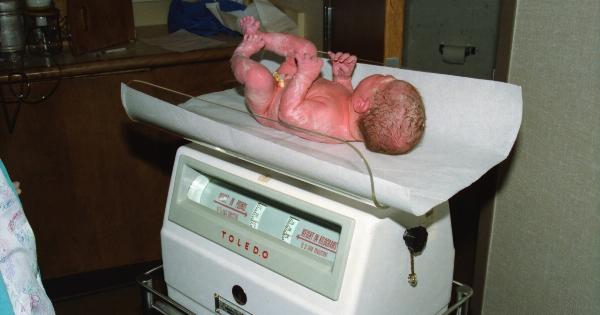Colic is a common condition that affects many infants during their first few months of life. It is characterized by episodes of excessive crying, often lasting for several hours a day, for at least three days a week.
Colic can be distressing for both the baby and the parents, as it is challenging to soothe and can disrupt daily routines. While the exact cause of colic is unknown, there are various techniques that can help alleviate the symptoms and provide relief for your baby. In this article, we will explore ten effective techniques to help relieve your baby’s colic.
1. Gentle Belly Massage
A gentle belly massage can help to relieve the discomfort caused by colic. Use your fingertips to massage your baby’s abdomen in a circular motion, moving from the right side to the left side.
This technique can help to stimulate digestion and relieve gas buildup, providing relief for your baby.
2. Swaddling
Swaddling involves wrapping your baby snugly in a blanket, recreating the feeling of being in the womb. This technique can help soothe your baby by providing a sense of security and reducing their startle reflex.
Use a lightweight, breathable blanket and ensure that your baby’s hips and legs have enough room to move freely.
3. White Noise
White noise, such as the sound of a fan, washing machine, or a dedicated white noise machine, can help mask other sounds and create a soothing environment for your baby.
The gentle and consistent sound can help calm your baby and distract them from the discomfort of colic.
4. Controlled Feeding
Colic can sometimes be related to digestion issues. To help alleviate the symptoms, consider implementing controlled feeding techniques.
Slow down the feeding process by ensuring a proper latch during breastfeeding or using a slow-flow nipple for bottle feeding. This approach can help reduce the amount of air your baby ingests and minimize discomfort.
5. Burping
Burping your baby after each feeding can help release trapped air in their stomach, minimizing colic symptoms. Gently pat or rub your baby’s back while holding them upright to encourage burping.
Experiment with different burping positions to find what works best for your baby.
6. Babywearing
Babywearing involves using a soft carrier or wrap to carry your baby close to your body. The gentle motion and close contact can provide comfort and security for your baby, reducing colic-related distress.
Ensure that the carrier is ergonomic and promotes healthy hip and spine development.
7. Colic-Friendly Diet
If you are breastfeeding, consider adjusting your diet to reduce potential triggers for colic. Certain foods, such as caffeine, dairy products, and spicy foods, may worsen colic symptoms in some babies.
Keep a food diary to identify any potential triggers and consult with a healthcare professional for personalized guidance.
8. Soothing Baths
A warm and soothing bath can help relax your baby’s muscles and provide relief from colic. Fill the bath with comfortably warm water and gently submerge your baby, supporting their head and neck.
You can also add a few drops of baby-friendly essential oils, such as lavender or chamomile, to promote relaxation.
9. Tummy Time
Tummy time is crucial for your baby’s development, but it can also help alleviate colic symptoms. Place your baby on their tummy on a soft and safe surface, such as a play mat, for short periods throughout the day.
The gentle pressure on their abdomen can aid digestion and relieve discomfort.
10. Consult a Healthcare Professional
If your baby’s colic symptoms persist despite trying various techniques, it is essential to consult a healthcare professional. They can assess your baby’s overall health and provide guidance specific to your situation.
They may recommend additional interventions, such as probiotics or specialized formulas, to help manage colic effectively.































